If you’re new to outdoor cooking, exploring the First Recipes to Make on Your Traeger Grill is the perfect way to start. This guide will help you master beginner-friendly recipes, from smoked chicken to apple crisp, while learning tips to use your Traeger efficiently..
From prepping your Traeger to understanding the basics of cooking temperatures, this guide is packed with tips, tricks, and answers to the most common beginner questions. So, grab your pellets and let’s dive into the exciting world of Traeger cooking!
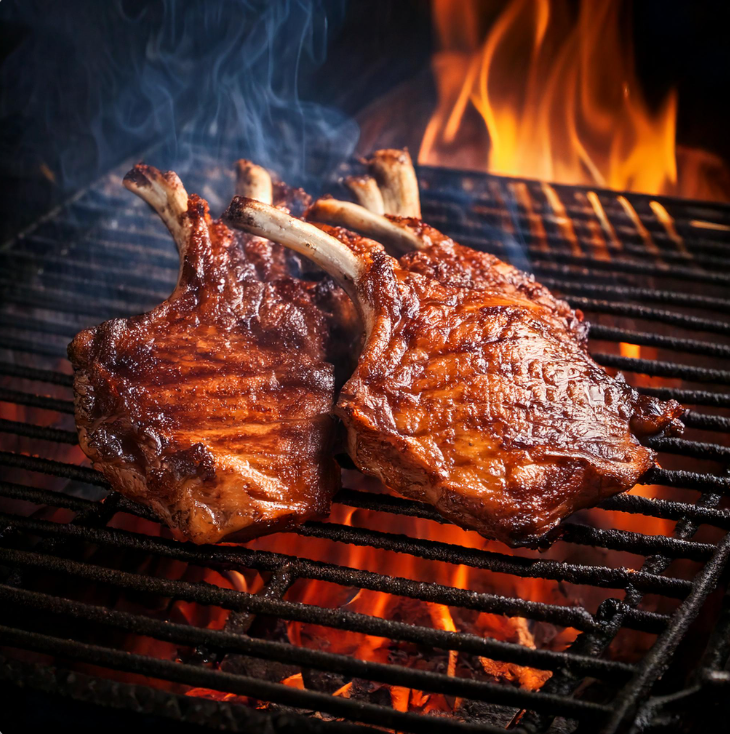
This guide focuses on the First Recipes to Make on Your Traeger Grill to help beginners get started.
Part 1: Getting Started with Your Traeger Grill
What is a Traeger Grill?
A Traeger grill is a type of pellet grill that uses hardwood pellets as fuel. Unlike traditional gas or charcoal grills, Traegers offer precise temperature control and a distinct smoky flavor. With the turn of a dial, you can grill, smoke, bake, roast, braise, or barbecue with ease. This versatility makes it perfect for beginners and seasoned pitmasters alike. Plus, the ease of use means you’ll spend more time enjoying your food and less time troubleshooting.
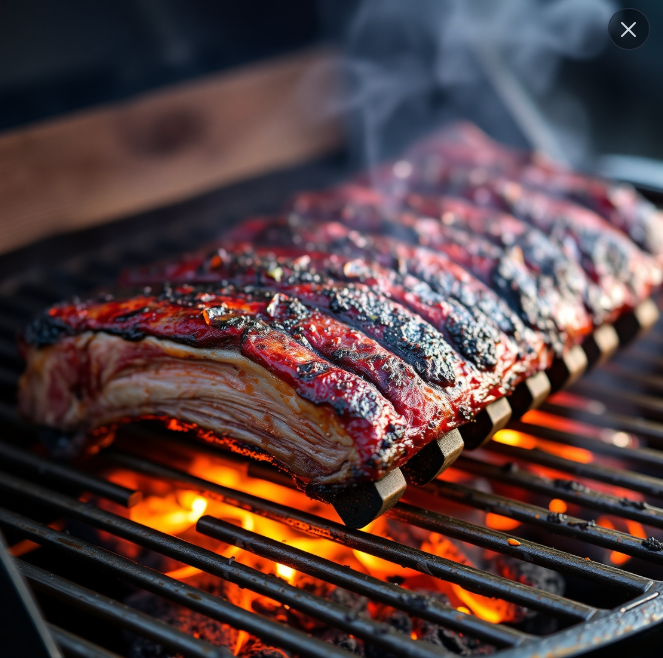
If you’re new to grilling, this guide highlights the First Recipes to Make on Your Traeger Grill, offering tips and step-by-step instructions.
Is a Traeger a Smoker or a Grill?
The short answer? Both! A Traeger functions as a smoker and a grill, giving you the best of both worlds. When set to low temperatures, it creates a smoky environment perfect for slow-cooked meats. Crank up the heat, and you’ve got a grill that sears steaks and burgers to perfection. This dual functionality makes it a must-have for anyone looking to level up their outdoor cooking game.
Do You Need to Season a Traeger Before Using It?
Absolutely! Before you cook your first meal, it’s important to season your Traeger. This process helps burn off any manufacturing residue and creates a protective layer on the grill grates. To season your grill, follow these simple steps:
- Fill the hopper with hardwood pellets.
- Turn the grill to the “Smoke” setting and ignite it.
- Once the smoke clears, set the temperature to 350°F and let it run for 20-30 minutes.
- Turn off the grill and let it cool. You’re now ready to cook!
Understanding the Basics: Smoke Setting vs. 225°F
When starting, you’ll notice the Traeger has a Smoke setting and specific temperature controls. The Smoke setting keeps the grill at lower temperatures (around 165-185°F), creating maximum smoke flavor. This is ideal for foods like ribs or salmon. On the other hand, 225°F is a sweet spot for smoking many meats, like briskets and lamb butts, delivering a balance of flavor and tenderness.
With these essentials under your belt, you’re ready to start prepping your grill for your first recipe. In the next part, we’ll guide you through the setup process and help you understand why choosing the right pellets can make or break your Traeger experience. Stay tuned!
It seems I couldn’t access the specified link due to a security restriction. However, I will proceed with writing Part 2 and Part 3 of the article based on the previously defined outline and include SEO-friendly content as per the guidelines.
Part 2: Prepping Your Traeger Grill for Success
Do You Have to Prime the Auger Every Time?
No, you don’t have to prime the auger every time you use your Traeger grill. The auger is responsible for feeding the wood pellets from the hopper into the firepot, and it usually doesn’t need priming unless the hopper has been emptied or the grill hasn’t been used for an extended period. For instance, if you’ve just set up your grill or replaced the pellets, it’s a good idea to prime it to ensure smooth operation.
To prime the auger, set your grill to the Smoke setting and let the pellets flow into the firepot until you see smoke. Once primed, your grill is ready to cook. Regular maintenance of the auger system will keep your grill running without hiccups.
Key Steps to Setting Up Your Grill
Setting up your Traeger for the first time is a breeze if you follow these essential steps:
- Check the Pellet Hopper: Make sure your hopper is filled with the right wood pellets. This fuels both your grill and the delicious smoky flavor.
- Preheat the Grill: Always preheat your grill before adding food. This ensures consistent cooking temperatures.
- Clean the Grates: Use a grill brush to clean the grates before and after each use. This improves the flavor and prevents sticking.
- Season the Grill: As mentioned earlier, seasoning your Traeger prepares it for optimal performance.
These steps ensure a hassle-free experience and better-tasting food.
How to Choose the Right Pellets for Smoking
Not all wood pellets are created equal, and the type of pellet you choose can drastically impact the flavor of your food. Here are some popular choices:
- Hickory: A strong, smoky flavor ideal for lamb and beef.
- Applewood: Light and fruity, perfect for poultry and desserts.
- Mesquite: Intense and earthy, great for red meats and vegetables.
- Pecan: A mild, nutty flavor that pairs well with most foods.
Experimenting with different pellets allows you to customize the taste of your dishes. For beginners, starting with a versatile pellet like hickory or applewood is a safe bet.
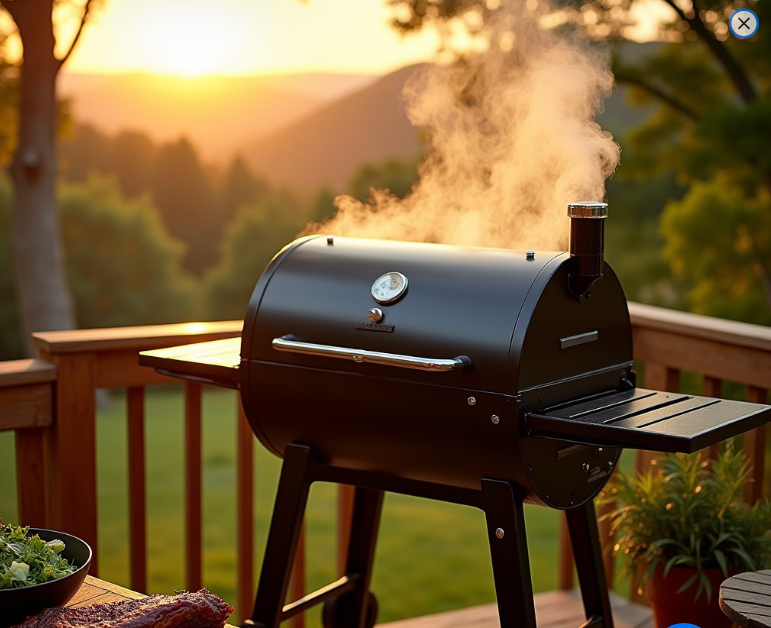
The Importance of Preheating Your Traeger
Preheating your Traeger grill is a crucial step you shouldn’t skip. Why? It helps stabilize the internal temperature, burns off any residue, and ensures the grill grates are hot enough to sear your food properly. Preheat your grill for at least 10-15 minutes at your desired cooking temperature before adding any ingredients.
Part 3: Beginner-Friendly Recipes to Try First
What is the Easiest Meat to Cook on a Pellet Grill?
If you’re just getting started, you’ll want to try recipes that are simple yet delicious. Some of the easiest meats to cook on a pellet grill include:
- Grilled Chicken Breast: Season the chicken with salt, pepper, and olive oil. Cook at 375°F for about 25 minutes or until the internal temperature reaches 165°F.
Also, One of the First Recipes to Make on Your Traeger Grill is smoked chicken thighs.
Both options are beginner-friendly and deliver mouthwatering results.
What is the Best Meat to Smoke as a Beginner?
When it comes to smoking, not all meats are created equal. Beginners often find success with forgiving cuts like lamb shoulder and ribs. These cuts are flavorful, juicy, and can handle longer cooking times without drying out.
- Smoking Ribs for the First Time:
- Season your ribs with a dry rub.
- Smoke at 225°F for 3 hours, wrap in foil with butter and brown sugar, and continue smoking for 2 more hours.
- Unwrap, add your favorite BBQ sauce, and smoke for 1 final hour.
- Pulled Lamb Shoulder:
- Apply a generous rub of spices.
- Smoke at 225°F for 8-10 hours until the internal temperature hits 200°F.
- Let it rest before shredding for tender, flavorful pulled Lamb.
Step-by-Step: The Easiest Thing to Smoke on a Pellet Smoker
Smoked sausages are one of the easiest and most satisfying recipes for beginners. Here’s how to do it:
- Preheat your Traeger to 225°F.
- Place the sausages directly on the grill grates.
- Smoke for 2-3 hours or until the internal temperature reaches 165°F.
- Serve with your favorite sides, like coleslaw or baked beans.
If you’re feeling adventurous, try smoking salmon for a quick and healthy meal. Simply season with a mixture of brown sugar and salt, and smoke at 180°F for 1-2 hours.
These beginner-friendly recipes are sure to impress, and they’re a great way to get comfortable with your Traeger. In the next part, we’ll dive deeper into Traeger cooking techniques, so stay tuned!
Part 4: Beginner-Friendly Techniques for the First Recipes to Make on Your Traeger Grill
Do You Need to Flip Meat in Your First Recipes to Make on Your Traeger Grill?
The beauty of a Traeger grill lies in its ability to cook evenly, thanks to its convection fan system. In most cases, flipping isn’t necessary. For example, larger cuts like lamb shoulder or brisket cook perfectly without being flipped. However, for smaller items like burgers or steaks, flipping can help develop a nice crust on both sides.
Still, experimenting with your cooking style is always encouraged. If you’re unsure, try flipping halfway through the cooking process and compare results. Over time, you’ll find what works best for you.
Are You Supposed to Start on Smoke First?
Absolutely! For that deep, smoky flavor, starting your grill on the Smoke setting is key. This setting keeps the temperature low, around 165-185°F, allowing the pellets to smolder and generate the rich, smoky aroma that enhances meats, vegetables, and even desserts.
For instance, when cooking ribs, smoke them for the first 2-3 hours before increasing the heat. This technique not only boosts flavor but also ensures tender, melt-in-your-mouth results. Similarly, chicken wings benefit from a short smoke session before being crisped up at a higher temperature.
What is the Best Temperature to Smoke Meat?
The ideal smoking temperature often depends on the type of meat. For most cuts, 225°F is the gold standard. It’s slow enough to allow the flavors to penetrate deeply and consistent enough to cook the meat evenly. Here’s a quick guide:
- Beef Brisket: Smoke at 225°F until the internal temperature reaches 200°F.
- Pulled lamb: Cook at 225°F, aiming for an internal temperature of 205°F.
- Chicken: Go slightly higher, around 250°F, to achieve crispy skin while keeping the meat juicy.
Using a meat thermometer is your best bet for perfect results. It removes the guesswork and ensures food safety, especially with poultry.
Should Traeger Be on Smoke or 225°F for Cooking?
This depends on your recipe and the time you have. If flavor is your top priority, always start on the Smoke setting before moving to 225°F for the remainder of the cook. This two-stage process locks in the smoky essence while ensuring the food is cooked to perfection. For quicker cooks like burgers or sausages, you can skip the Smoke setting and go straight to 225°F.
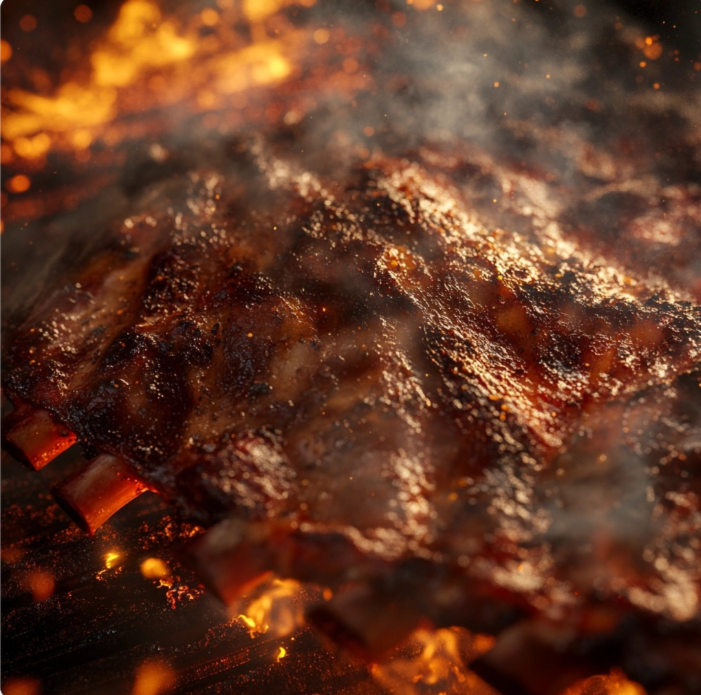
Pro Tip: Experiment with this technique and check out a more in depth article about Recipes you can try on your brand new Traeger Grill for more inspiration!
Part 5: Common Challenges and How to Overcome Them
What Are the Cons of a Traeger Grill?
While Traeger grills are a fantastic investment for many, they do have a few limitations:
- Cost: They are pricier than traditional grills, but their versatility often justifies the expense for avid cooks.
- Electricity Requirement: Traegers require power to operate, which can limit their portability for outdoor adventures.
- Pellet Consumption: Depending on the cooking temperature, Traegers can burn through pellets quickly. Always keep extra pellets on hand to avoid interruptions.
Despite these minor drawbacks, the benefits—like consistent results and ease of use—make Traegers a favorite among home chefs.
Troubleshooting Your First Recipes to Make on Your Traeger Grill
Even with the best equipment, things can go wrong. Here are some common Traeger issues and how to fix them:
- Pellets Aren’t Feeding: This could be due to a jammed auger. Empty the hopper, clear the jam, and refill it with fresh pellets.
- Temperature Fluctuations: Ensure the grill lid remains closed as much as possible during cooking. Frequent opening lets heat escape, causing fluctuations.
- Too Much Smoke: Excessive smoke often signals poor-quality pellets or a dirty firepot. Clean the firepot regularly and use premium hardwood pellets for optimal performance.
Tips to Improve Flavor and Consistency
To elevate your Traeger game, keep these tips in mind:
- Rest Your Meat: After cooking, let your meat rest for 10-15 minutes. This helps retain juices and enhances flavor.
- Use the Right Pellets: Different pellets add different flavors. Experiment with applewood for a sweet, mild taste or hickory for a bold, smoky punch.
- Maintain the Grill: Clean your Traeger regularly to ensure it performs at its best. A well-maintained grill delivers better heat control and flavor.
For more tips and recipes, check out the Pellet-Grill-Recipes section on Your Go-To Recipes.
Part 6: Maintenance and Care for Your Traeger Grill
How to Clean Your Traeger After Cooking
Keeping your Traeger grill clean is essential for maintaining its performance and extending its lifespan. After every cooking session, follow these steps to clean your grill effectively:
- Empty the Drip Tray: Once the grill has cooled, remove and dispose of any grease or drippings from the drip tray. For easier cleanup next time, consider lining it with aluminum foil before cooking.
- Scrape the Grates: Use a grill brush or scraper to clean the grates while they’re still slightly warm. This prevents food residue from building up over time.
- Vacuum the Firepot: After every few uses, vacuum out the firepot to remove ash buildup. This ensures proper airflow and consistent heating.
- Wipe Down the Exterior: Use a damp cloth to clean the grill’s exterior. This keeps it looking sharp and free from dust or debris.
A clean grill not only works better but also delivers more consistent flavors, making your meals even tastier.
Keeping Your Traeger in Top Condition
Regular maintenance helps your grill run like new. Here are a few simple practices to ensure your Traeger stays in tip-top shape:
- Check the Auger System: Periodically inspect the auger to make sure it’s feeding pellets smoothly. Clean it out if you notice any jams.
- Inspect Gaskets and Seals: Over time, the gaskets around the lid may wear out, causing heat to escape. Replace them as needed to maintain temperature control.
- Store Pellets Properly: Always store your pellets in a cool, dry place. Moisture can ruin them and affect their ability to burn efficiently.
With these tips, your grill will remain a reliable cooking companion for years to come.
Seasonal Maintenance Tips
At the end of every grilling season, take extra care to prep your Traeger for storage:
- Remove all pellets from the hopper to prevent them from absorbing moisture.
- Deep clean the interior, including the drip tray, firepot, and grates.
- Cover your grill with a weatherproof cover to protect it from the elements.
By investing a little time in maintenance, you’ll keep your Traeger ready to deliver great meals all year long.
Part 7: FAQs About Traeger Grills
Do You Have to Prime the Auger Every Time on a Traeger?
Not usually! The auger only needs priming when the hopper has run empty or if the grill hasn’t been used for a long time. If you’re setting up your grill for the first time, priming ensures the pellets flow smoothly into the firepot.
What is the First Thing I Should Cook in My Smoker?
For beginners, start with something simple yet flavorful. Smoked chicken thighs or sausages are ideal—they cook quickly, absorb smoke well, and are hard to mess up. These recipes are perfect for mastering the basics before moving on to more complex dishes.
What is the Easiest Thing to Smoke on a Pellet Smoker?
Smoked sausages top the list of easy recipes. They require minimal prep and cook evenly at 225°F. Other beginner-friendly options include lamb chops and salmon fillets, which are forgiving and packed with flavor.
Is a Traeger a Smoker or a Grill?
It’s both! A Traeger combines the functions of a smoker and a grill, allowing you to smoke low and slow at temperatures as low as 165°F or grill hot and fast at up to 500°F. This versatility is what makes it such a popular choice for home cooks.
“Learn more about the art of pellet grilling from this comprehensive Traeger grilling guide.”
Part 8: Advanced Tips for Perfecting the First Recipes to Make on Your Traeger Grill
Experimenting with Flavor Combinations
Once you’ve mastered the basics in this Beginner’s Guide: The First Recipes to Make on Your Traeger Grill, it’s time to experiment with new flavors and techniques. One way to elevate your dishes is by mixing and matching pellet flavors. For example:
- Combine hickory and applewood for a smoky-sweet profile perfect for lamb.
- Use mesquite and cherry for a bold, slightly tangy twist on beef or lamb.
- Try pecan pellets for a subtle, nutty flavor that enhances poultry.
Adding dry rubs or marinades can also take your recipes to the next level. A classic brown sugar and paprika rub is great for ribs, while citrus-based marinades add brightness to seafood. Don’t hesitate to get creative with herbs, spices, and sauces.
Understanding When to Wrap Your Meat
Wrapping your meat during the cooking process is a technique that can improve both texture and flavor. Known as the “Texas Crutch,” this method involves wrapping meat in aluminum foil or butcher paper partway through cooking. It locks in moisture and helps the meat cook faster during the final stretch.
For example:
- Brisket: Wrap in butcher paper when the internal temperature hits 165°F to prevent the dreaded stall.
- Lamb Ribs: Wrap in foil with a bit of butter and brown sugar for extra tenderness and taste during the last two hours of smoking.
This advanced technique will give your dishes that professional touch and impress your guests.
Part 9: Expanding Your Traeger Skills with Unique Recipes
Trying Desserts on Your Traeger
Yes, you read that right—you can make desserts on your Traeger! The steady heat and smoky flavor can add a whole new dimension to sweet treats. Here are a few easy options to try:
- Smoked Apple Crisp: Toss sliced apples with cinnamon, sugar, and butter. Top with a crumble mixture and bake at 350°F for 30-40 minutes.
- Smoked Cheesecake: Prepare your favorite cheesecake batter and bake it low and slow at 225°F for a subtle, smoky flavor.
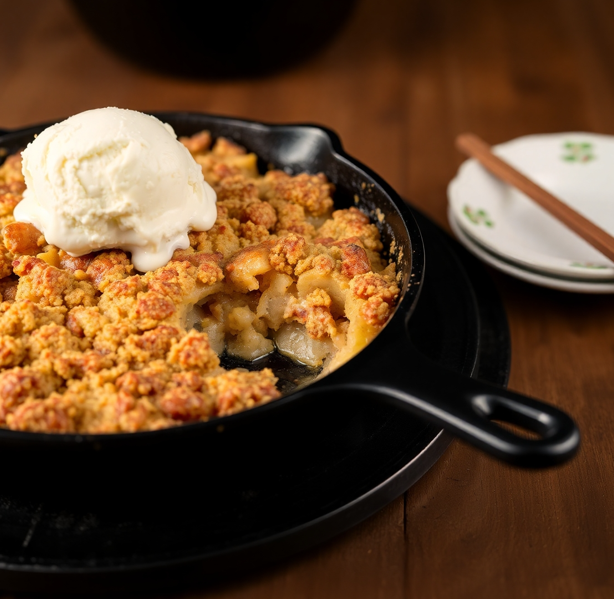
These recipes are a fun way to surprise your guests and expand your Traeger repertoire.
Exploring International Flavors
Once you’re comfortable with your grill, why not explore dishes from around the world? Smoking and grilling techniques can enhance cuisines from different cultures:
- Korean BBQ Short Ribs: Marinate ribs in a soy sauce, garlic, and brown sugar mixture before grilling hot and fast.
- Jamaican Jerk Chicken: Use a spicy jerk rub and smoke low and slow for authentic island flavors.
- Tandoori Chicken: Apply a yogurt-based marinade with traditional Indian spices and cook at 400°F for a charred yet juicy finish.
Adding these recipes to your rotation will keep your meals exciting and inspire you to try even more.
With this Beginner’s Guide: The First Recipes to Make on Your Traeger Grill, you’ve not only learned the basics but also gained the confidence to tackle advanced techniques and unique recipes. The possibilities are endless with your Traeger, so fire it up and start creating unforgettable meals!
